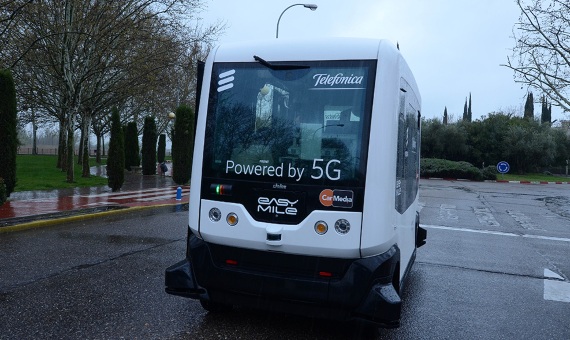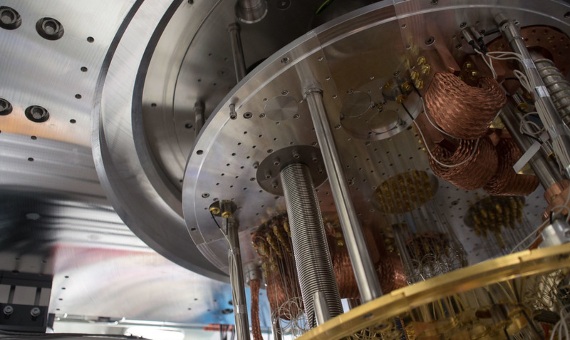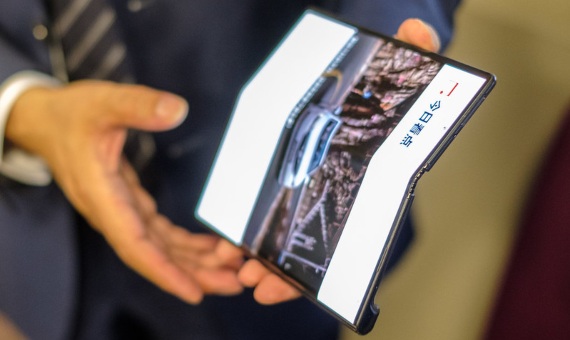While 2018 was the year of virtual assistants, autonomous vehicles and smartphones, in 2019 we began to see the promises of technologies such as 5G or quantum computing fulfilled for the first time. But in the face of these success stories, we have also seen the launch of foldable mobiles that seemed unready to go to market, and the inability of society to confront the biases and ethical dilemmas presented by facial recognition.
Here we review the best and the worst of technology in 2019.
THE BEST
5G takes off
Although we will still have to wait to see a massive implementation of 5G, this year the technology has started to take off.
In February 2019, a team of surgeons and anaesthetists performed the first remote surgery using 5G. A surgeon situated kilometres away gave real-time instructions to doctors while performing an operation. As the report “From Healthcare to Homecare” from Ericsson ConsumerLab points out, this technology will forever change the health sector. The study underscores that the low latency of 5G networks will enable the greater use of medical robots, real-time monitoring of patient health and telemedicine applications.

The first applications of 5G in the development of the autonomous car have also begun to be seen. For example, Telefónica has begun to deploy infrastructure in cities and highways to test autonomous driving. The company has unveiled a prototype of an autonomous minibus connected to the 5G network and, together with Seat, has carried out a demonstration of assisted driving via the 5G mobile network in a real environment in Spain.
Similarly, manufacturers such as LG, Samsung and Xiaomi have already launched their first 5G-compatible handsets. At the same time, different countries such as Spain, Japan, China, United Kingdom, Italy and the United States have begun to deploy this technology that promises to change the way we interact with our smartphones. Although it is expected that future 5G connection speeds will be up to 250 times faster than the current 4G, for the time being connections are about 10 times faster. This difference, which will significantly improve the experience of online videogames, is mainly noticeable at the moment when downloading large files at dizzying speeds.
Quantum supremacy
In October, Google publicised in the scientific journal Nature one of the greatest advances in the history of quantum computing. The company from Mountain View California claims to have carried out in just 200 seconds an operation to calculate random numbers that would take the world’s most powerful supercomputer at least 10,000 years to complete. This finding would be the first empirical demonstration of the concept of quantum supremacy, which consists of performing a task on a quantum computer using fewer resources than on a classic computer; IBM disputes this, however, asserting that a classic computer could run the same experiment that Google proposes and achieve a result in just two and a half days.
Experts agree that many more papers will be necessary before a definitive consensus on quantum supremacy can be reached, but what is relevant is that this technology has advanced enough to become competitive with classic computing in certain tasks.

In addition to these two companies, others such as Microsoft, Honeywell, Rigetti Computing, IonQ, Intel and NTT are also in the race. At the moment, the quantum computers available to researchers only serve to test algorithms in small problems, for example in the simulation of quantum systems, such as small molecules, in optimization problems and in small machine-learning tasks. Later, when algorithms can be applied to bigger and bigger problems, quantum computing is expected to have a major impact on industries such as pharmaceuticals and petrochemicals or the manufacture of goods.
THE WORST
The tarnished arrival of foldable mobile phones
2019 was expected to be the year of foldable phones. In February 2019, Samsung unveiled its first model in San Francisco: the Galaxy Fold, which it intended to start selling on April 26. But after leaving several test devices with American journalists and YouTubers specializing in technology, hopes for a smooth rollout were dashed and the company ended up delaying the start of sales until September. After just two days of use, the mobiles began to exhibit different problems with the screen: one of the handsets had a small bulge in the fold of the screen, and the screen of another began to switch off and on constantly.

This unforeseen event, together with the prohibitive prices for this type of handset —around 2,000 euros— called into question whether this type of mobile was ready to reach the market.
Nevertheless, the main manufacturers have followed Samsung’s lead and opted for telephones with large screens capable of being folded to reduce their size. In October, Huawei started selling the Huawei Mate X, its own foldable phone also equipped with 5G connectivity. More recently, Motorola has introduced a new version of the legendary Razr, this time without physical keys and with a foldable screen. Other companies such as Xiaomi, Oppo and TCL are also working on this type of device. Even Samsung is planning to launch the W20 5G, a model similar to the Galaxy Fold but with improvements in the folding system and the internal processors.
The biases and ethical dilemmas of facial recognition
2019 has also been the year in which the use of facial recognition began to be debated. In May, San Francisco became the first city in the United States to ban the use of this emerging technology by local authorities. The prohibition of this tool, which uses artificial intelligence to identify faces, reopened the discussion.
The technology is controversial because it is able to identify people in any context without them noticing and applies a series of biases. A study by the Georgetown Center for Privacy and Technology found that this tool used by various departments is more prone to make errors with African Americans.

Despite this, its use keeps growing. While in 2017 the market for facial recognition technology reached 1.4 billion dollars, Statista forecasts that in 2019 the figure will rise to 1.9 billion. And its growth is expected to continue, reaching 3.1 billion in 2022. Some authorities and institutions around the world are employing it in their projects. For example, the European Parliament has approved the creation of a biometric database using the fingerprint or face of the user for the more than 500 million inhabitants of the EU.
In contrast, some cities are considering following in the footsteps of San Francisco. Oakland and Berkeley in California and Somerville in Massachusetts are considering whether to ban the use of facial surveillance by the government. Meanwhile, some individuals have even taken action on their own. A man has sued the Welsh Police for taking a picture of his face with an automatic facial recognition system while doing some Christmas shopping.
Comments on this publication